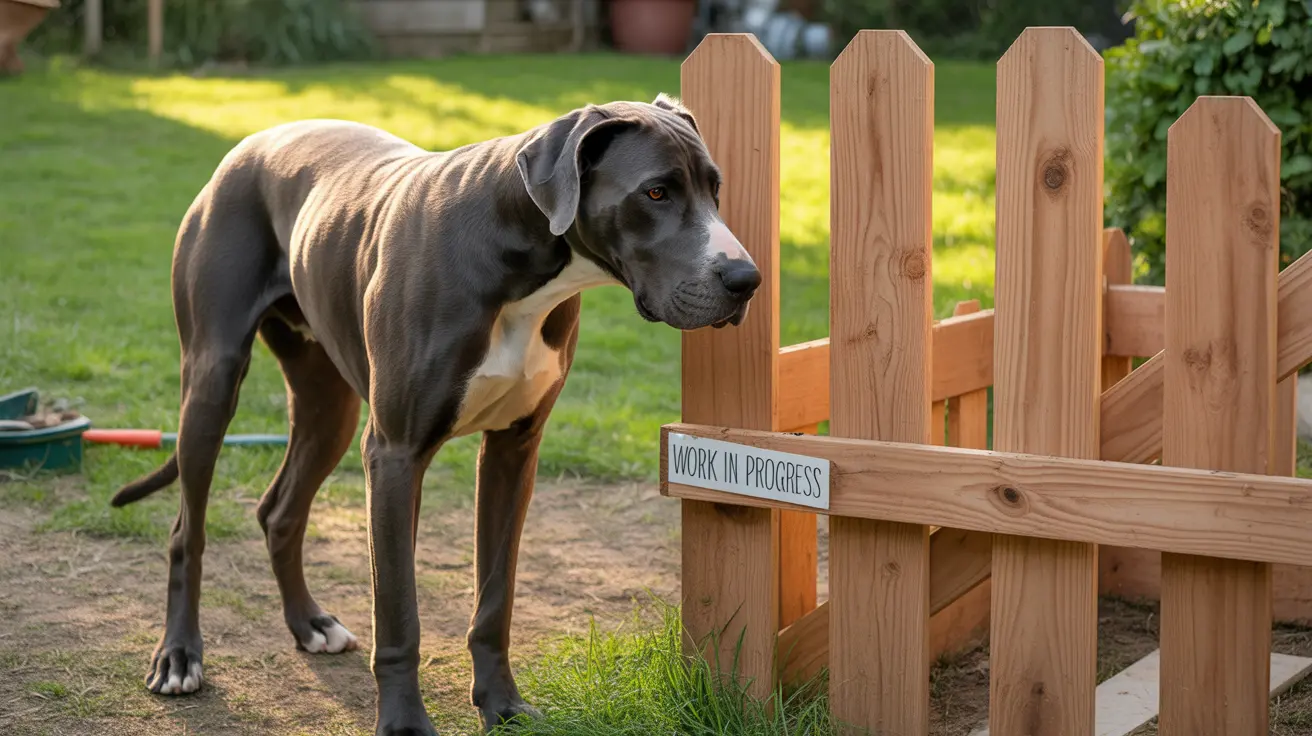Introduction
Building a DIY dog fence can be an excellent solution for pet owners looking to create a safe, secure space for their furry friends while saving money. Whether you're dealing with a tiny terrier or a massive mastiff, the right fence can provide peace of mind and freedom for your pet to enjoy the outdoors safely. This comprehensive guide will walk you through everything you need to know about creating the perfect DIY dog fence, from material selection to installation tips.
With professional installation costs ranging from $2,000 to $8,000, taking the DIY route can lead to significant savings while allowing you to customize the fence to your specific needs. Let's explore the various options, materials, and methods to help you build the ideal enclosure for your four-legged friend.
Choosing the Right Fence Type
The first step in your DIY dog fence journey is selecting the appropriate type of fence. Your choice should depend on several factors, including your dog's size, behavior patterns, and your property's characteristics.
Traditional Fencing Options
- Wood fencing ($1-$15 per foot)
- Vinyl fencing ($20-$40 per foot)
- Chain link ($10-$27 per foot)
- Wire mesh ($3-$8 per foot)
Alternative Solutions
- Invisible/electric fencing systems
- Temporary/portable fencing
- Hybrid systems combining physical and electronic barriers
Materials and Cost Breakdown
The total cost of your DIY dog fence project will vary significantly based on your chosen materials and yard size. Here's a detailed breakdown of common options:
Budget-Friendly Options
- Recycled pallets (often free)
- Chicken wire ($1-$3 per foot)
- Garden fencing ($2-$4 per foot)
Mid-Range Solutions
- Welded wire panels ($5-$10 per foot)
- Pre-made fence panels ($15-$30 per foot)
- DIY fence kits ($566-$2,800 total)
Installation Guidelines
Proper installation is crucial for ensuring your DIY dog fence's longevity and effectiveness. Follow these essential steps:
Required Tools
- Post-hole digger
- Level
- Measuring tape
- Drill/driver
- Concrete mix
- Basic hand tools
Installation Steps
- Mark your fence line
- Dig post holes (2-3 feet deep)
- Set posts in concrete
- Install horizontal supports
- Attach fencing material
- Add gates at access points
Safety and Maintenance Tips
Regular maintenance ensures your DIY dog fence remains secure and effective long-term. Consider these important factors:
Safety Considerations
- Check for sharp edges or protruding elements
- Ensure proper gate latching mechanisms
- Install dig prevention barriers if needed
- Regular inspection for wear and tear
Maintenance Schedule
- Monthly perimeter checks
- Seasonal hardware tightening
- Annual structural inspection
- Immediate repair of any damage
Frequently Asked Questions
How do I choose the best type of DIY dog fence for my dog's size and behavior?
Consider your dog's size, jumping ability, and digging tendencies. Larger or more active dogs typically need taller, sturdier fences, while smaller dogs might be well-contained with simpler solutions. For escape artists, consider combining physical fencing with underground barriers.
What are the most cost-effective materials for building a durable DIY dog fence?
Chain link and welded wire fencing offer the best balance of durability and affordability. For budget options, recycled pallets or chicken wire can work well for smaller or less active dogs, though they may require more frequent maintenance.
How can I prevent my dog from digging or jumping over a DIY fence?
Install L-footer barriers underground to prevent digging, and consider adding coyote rollers or fence extensions for jumping prevention. The fence height should be at least 5-6 feet for jumpers, with buried material extending 12 inches below ground.
What tools and steps are required to install a DIY dog fence properly?
Essential tools include post-hole diggers, levels, measuring tape, and concrete for setting posts. The basic steps involve planning the layout, setting posts, installing supports, and attaching the fencing material. Always check local building codes before starting.
Are invisible or electric dog fences safe and effective alternatives to physical fences?
Invisible fences can be effective with proper training but don't provide physical barriers against outside threats. They're best used as supplements to physical fencing or in situations where traditional fencing isn't practical. Ensure proper training and regular maintenance for optimal effectiveness.
Conclusion
Creating a DIY dog fence is a rewarding project that can save money while providing a secure space for your pet. By carefully considering your dog's needs, choosing appropriate materials, and following proper installation procedures, you can build a lasting and effective enclosure. Remember to maintain your fence regularly and address any issues promptly to ensure your pet's continued safety.






